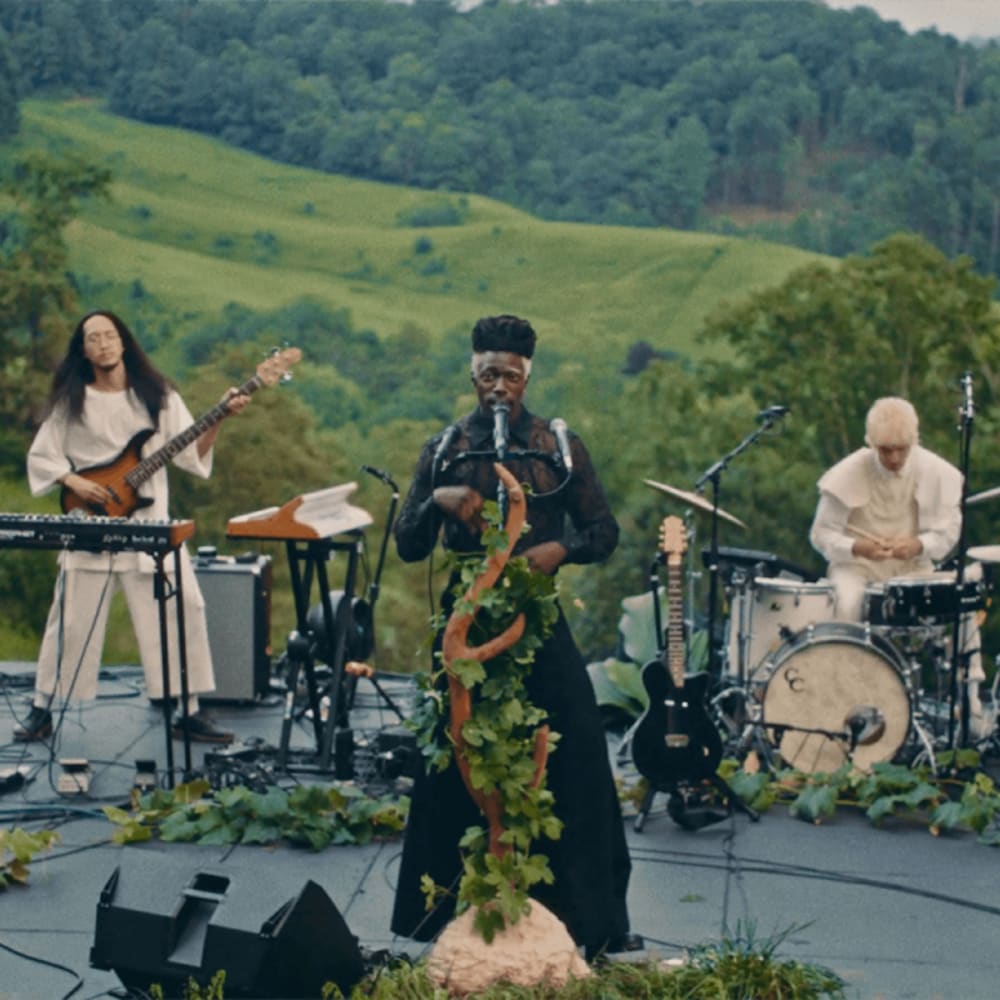From Smith’s art, we glean a picture of an artist transformed by risk, by a willingness to wander toward obscurity.
The word “photography,” in its literal translation from Greek, means something like “drawing with light.” The best of Ming Smith’s photographs, however, seem to draw against light. They feed off of shadows and drink up haze. Revealing themselves slowly, they live in somber zones of ambiguity, exerting a certain pressure on our optic hunger for clarity.
Look, for example, at the dark, discordant atmosphere in a photograph aptly titled “Shadow People” (1991). On the left side, we glimpse a small sliver of Buddha sculpture — a hand, a knee, and folds of a stone robe. Behind him on the wall, the huge penumbra of his body stretches tall and wide, its uncanny mass looming over the visual field. The sculpture is protected by a metal screen, whose delicate lattice pattern catches shards of light and contributes an additional layer of obfuscation and concealment. Cast into this enigma, the eye takes a few moments to adjust to this play of visual timbres.
“Shadow People” is among the highlights of On the Road, Smith’s second exhibition at Nicola Vassell gallery. The exhibition showcases a never-before-seen portion of Smith’s archive, spanning the years between 1970 and 1993, and a wide stretch of geography that encompasses New York, Paris, and Osaka. It displays an arsenal of welcome surprises and experiments, including an assortment of Smith’s hand-colored photographs. The arresting portrait of “Aunt Stella” (1990), for example, is made of balmy, tender chiaroscuro, yet splashed with an expressive sunflower yellow that cuts through the picture’s subdued mood. In other delightful moments of experimentation, Smith dances with near total abstraction: for example, “Love Note (New York, NY)” (1980) is a pure rush of silvery, darting forms shot with a long exposure.
The exhibition’s title refers to the years of journeying and itinerancy out of which this body of work was conceived. But what makes the show resonate is not this literal sweep of geographic motion, but rather the visual sense of motion that her images evoke. A suite of four photographs collectively titled Sunday Jazz Light Concerto (1984) studies the frenetic movements of a jazz ensemble caught in the tumult of performance. In the blur of Smith’s long exposure, the luster of whirling instruments generates dizzying, almost calligraphic patterns of light — arcs of motion whose radiance streaks across the otherwise dim scenes. What better way to capture the feeling of being inside the sonic riot of jazz than with these flashing, torquing forms? In another musical image, a portrait of James Brown, the light sings with a different tune. Here, the contours of the musician’s face assume a soft glow, alight with a sense of reverie.
Examples from the early 1970s, which are more akin to documentary photography, pack less of a punch. The abstruse and eerie beauty in Smith’s later photos is hard to locate in works like “Harlem Boy (Harlem, NY)” (1972), for example, an image that is more readily romanticized: a young boy standing at the top of a ladder stares boldly upward. It is a portrait that can be mapped onto a narrative of Black aspiration and dreaming — and I won’t deny its power in this respect. I also can’t deny feeling like I’ve seen it before. But this only makes the radical experimentation of Smith’s later work land with even more force: from Smith’s art, we glean a picture of an artist transformed by risk, by a willingness to wander toward obscurity.


